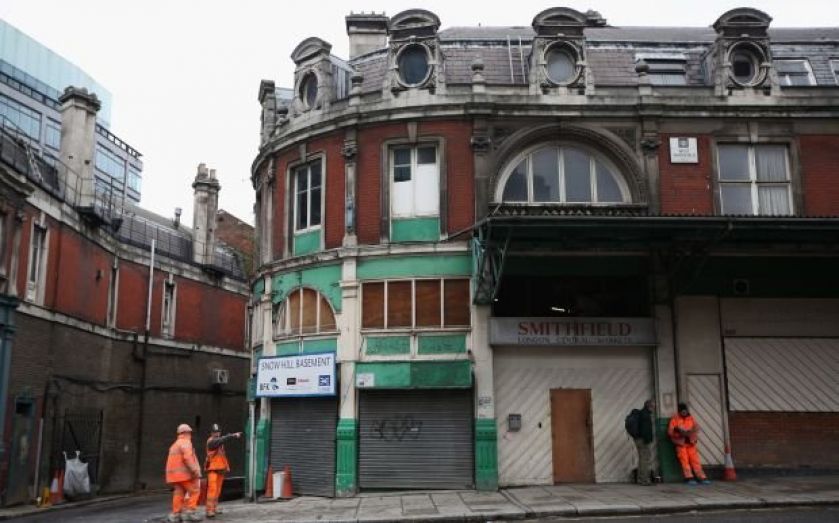City Matters: Why the frustrating rejection of Smithfield redevelopment helps no one

In 2018, the first Crossrail trains will come roaring in to Farringdon Station and commuters will spill out along its 200m platform. Some of them will be working in the new office buildings going up on Farringdon Street, as the railway helps revitalise the area. None will be working in the new Smithfield Quarter building that was to be based in the derelict general market. Secretary of state Eric Pickles has decided to overturn the City of London’s planning permission for the site.
This frustrating decision marks the third time in ten years that a secretary of state has stepped in at the eleventh hour to veto a scheme. With each intervention, redevelopment becomes more complex, costly, and less likely. The buildings on the Smithfield site have been derelict for more than 20 years, as successive redevelopment plans have failed. With the future always in doubt, developers can neither restore or redevelop them, leaving the buildings at the mercy of the elements.
This helps no one. As the economic recovery gathers steam, office space is at a premium across London, and the City remains a hugely popular business location. New towers like the Cheesegrater, the Walkie Talkie and the Heron are already almost fully let, with more underway. As London looks to increase capacity to meet this demand, it is both practical and environmentally sound to build offices around transport hubs – of which the Square Mile has several. Crossrail is about to become a major new hub, and it is wasteful to allow a crucial site on its doorstep to stand vacant. The future of the City as a cutting-edge business destination depends on its ability to renew and reinvent itself.
Renewing the City does not mean ignoring its past, of course; the City’s future should be balanced with its history, and it is important to preserve its most important historical buildings. But to assume that everything old is unlosable flies in the face of reality.
A campaign to list the Smithfield General Market building has failed twice, largely due to extensive poor quality restoration following bomb damage, but also due to the 1960s Poultry building on the site – another post-war replacement. The redevelopment proposed was sensitive to the remaining historical fabric (English Heritage did not object) and aimed to preserve the area’s history as a market, with boutiques and restaurants filling the ground floor and creating a public space for local workers to gather.
Instead, we are back at square one, with developer Henderson having to decide which course of action to take at Smithfield. We cannot continue like this; attempting to preserve a Victorian Square Mile is contrary to the needs of Londoners, the desire to protect the environment by preventing urban sprawl, and the City’s responsibilities as part of the mayor of London’s London Plan. We need a rational discussion about the future of London’s buildings, and we need to accept that the City is not cast in stone. Only then will the City’s future shape meet the best needs of all parties.
Mark Boleat is policy chairman at the City of London Corporation.